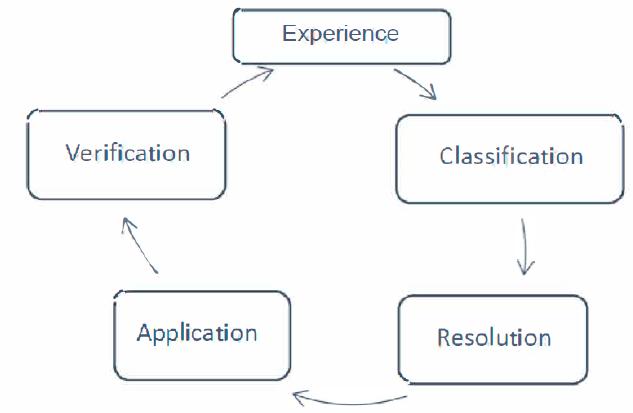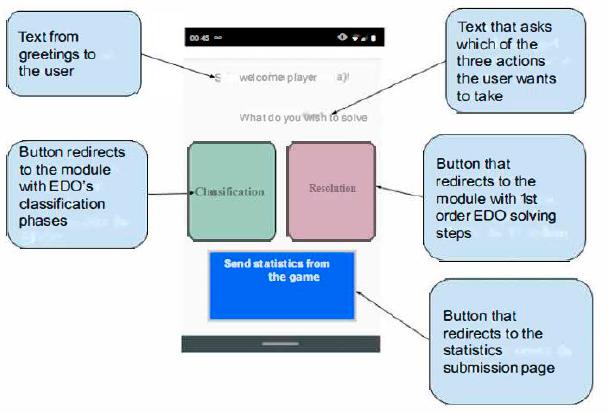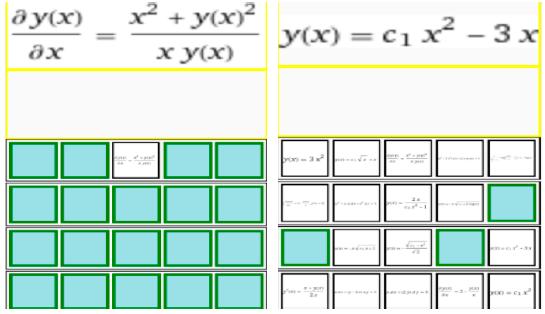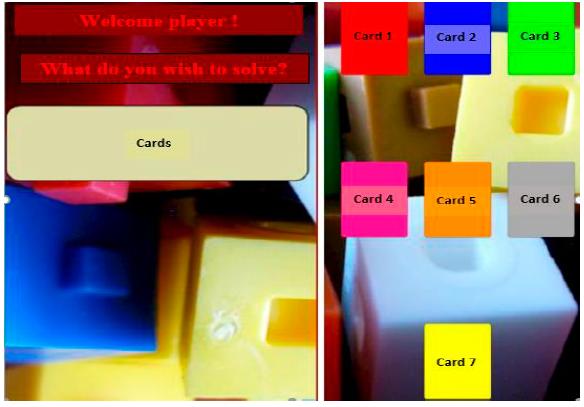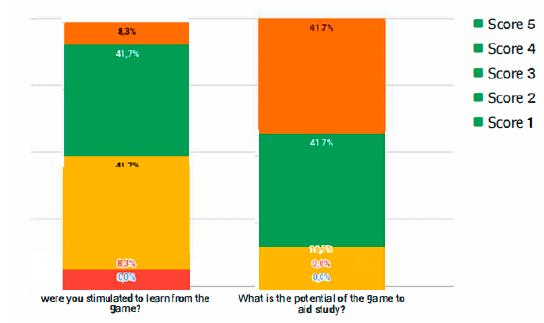Serviços Personalizados
Journal
Artigo
Compartilhar
Revista Internacional de Educação Superior
versão On-line ISSN 2446-9424
Rev. Int. Educ. Super. vol.8 Campinas 2022 Epub 12-Ago-2022
https://doi.org/10.20396/riesup.v8i0.8658629
Report Experience
AprEnDO, Mobile App to Improve Learning of Ordinary Differential Equations of 1st Order*
This work presents an experience report on the use of a mobile cellular service game as a technological teaching strategy to improve the learning and performance of students with the 1st Ordinary Differential Equations (ODE) content of the Engineering courses at Gama campus at University of Brasilia. The game is the aprEnDO application, developed for the Android platform. The main objective of this work is to present, discuss and evaluate the challenge of teaching and monitoring the learning of students in the second period, involving 1st order ODE concepts with the help of learning
KEYWORDS: Calculus learning; AprEnDO; Digital games
Este trabalho apresenta um relato de experiência da utilização de um jogo de serviço móvel celular como estratégia tecnológica de ensino para melhorar o aprendizado e o desempenho de estudantes com o conteúdo de Equações Diferenciais Ordinárias (EDO) de 1ª ordem dos cursos das Engenharias da Faculdade do Gama da Universidade de Brasília. O jogo é o aplicativo aprEnDO, desenvolvido para a plataforma Android. O objetivo principal deste trabalho é apresentar, discutir e avaliar o desafio de ensinar e acompanhar o aprendizado dos estudantes do segundo período, envolvendo conceitos de EDO de 1ª ordem com auxílio do aprEnDO.
PALAVRAS-CHAVE: Aprendizagem de cálculo; AprEnDO; Jogos digitais
Este documento presenta un informe de experiencia sobre el uso de un juego de teléfono celular móvil como una estrategia de enseñanza tecnológica para mejorar el aprendizaje y el rendimiento de los estudiantes con el contenido de la 1ª Ecuaciones Diferenciales Ordinarias (EDO) de los cursos de Ingeniería en la Faculdade do Gama de la Universidad de Brasilia. El juego es la aplicación aprEnDO desarrollada para la plataforma Android. El objetivo principal de este trabajo es presentar, discutir y evaluar el desafío de enseñar y monitorear el aprendizaje de los estudiantes en el segundo período, involucrando conceptos EDO de primer orden con la ayuda de aprEnDO.
PALABRAS CLAVE: Cálculo aprendizaje; AprEnDO; Juegos digitales
Introduction
Increasingly present in people's daily lives, at every moment digital technology conquers more space. According to the Brazilian Institute of Geography and Statistics - IBGE (IBGE, 2018), in the years 2016 and 2017, Internet access was 94.6% and 97%, respectively, through cell phones, surpassing connection by microcomputer, television, and tablet, as shown in Figure 1.

Source: IBGE, Research Board, Labor and Income Coordination, National Continuous Household Sample Survey 2016-2017, 2018.
Figure 1 Internet accesses in Brazil by equipment used (%) in 2016 and 2017.
In that same report, IBGE highlights the percentage of Internet accesses in Brazil in 2016 and 2017 in any location, by men and women, in the age groups 18 to 24 years and over 60 years, as illustrated in Figure 2.
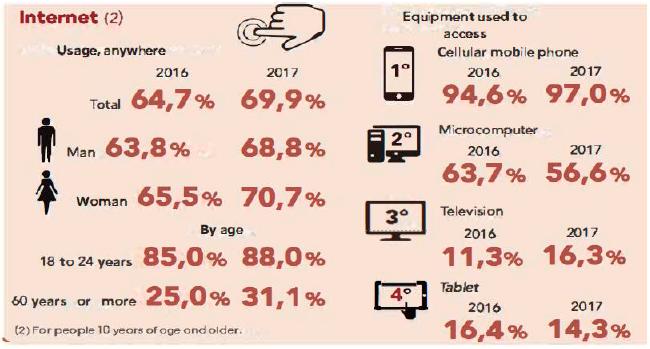
Source: IBGE, Research Board, Labor and Income Coordination, National Continuous Household Sample Survey 2016-2017, 2018.
Figure 2 Anywhere Internet accesses (%) in 2016 and 2017.
It is observed that in the group of 18 to 24 years old, Internet connection via cell phone and anywhere increased from 85% in 2016 to 88% in 2017, widely used by all social strata and all age groups (IBGE, 2018). In recent years, traditional basic cell phones have been replaced by Smartphones, devices that incorporate computer functionality, such as internet connection, and have numerous applications with various services with countless possibilities of use, such as, for example, games.
Differential Equations (DE) represent a crucial part of Calculus teaching. Their study adds important mathematical tools to solve problems in various areas of knowledge.
Our experience in teaching Calculus in Engineering courses and research in Mathematics Education reveal difficulties in the learning process of students studying DE, both in the use of techniques to solve them, and in the production of meaning and understanding of concepts. These difficulties become evident especially when applications are studied in contextualized problems involving Physics, Chemistry, Engineering, etc. In many situations, students master the solving techniques, but have difficulty identifying how to apply DIs to solve problems.
According to Moreno and Azcárate (2003), the traditional classroom, based on analytical methods and techniques for solving Ordinary Differential Equations (ODEs) and solving modeled problems presented as examples, predominates among university professors. They also point out that this style of teaching has brought a sense of failure among teachers, turning students into "solvers" of ODEs. Hence, the importance of thinking about a new methodology of active teaching-learning in engineering courses.
Considering the importance of ODEs in Calculus, the aim of this experience report is to present a possibility or alternative for its teaching in order to mitigate such difficulties using educational games on cell phones as an aid tool for this learning. As stated by Sá et al. (2007), educational games can be used to support the teaching and learning process and have been considered a powerful tool for their playful and interactive nature.
Therefore, considering these facts, this article presents the description lived in the teaching and learning of 1st order EDO using the aprEnDO game - an application developed for cell phones in order to improve the students' performance in this subject. Initially, section 2 presents correlated works; section 3 contemplates the methodology; section 4 brings the making of the game; section 5 reports the experience of using aprEnDO and its results; and section 6 presents the final considerations. The article is closed with the bibliographical references.
Correlated Works
Among the academic works involving digital games in mathematics teaching there are many aimed at students in kindergarten, elementary and high school. For example: Menezes and Roza (2016) developed the Genius Math application to support the teaching and learning of mathematics in early childhood education based on figures and sounds. It was developed in the Java programming language for cell phones with Android operating system and seeks to explore the knowledge of numbers, geometric shapes, and the operations of addition and subtraction.
Moraes and Colpani (2016a) developed a serious game with the use of Augmented Reality - AR technology in order to assist in the development of mental calculus involving the basic operations of mathematics and in building the notion of the precedence of signs for elementary school students. The serious game application with AR was developed using the Unity3D engine and the ARToolKit library, using the C# programming language for cell phones with the Android operating system, version 4.4.
Takita, Santana, and Souza (2018) developed Explosion Math, a digital educational game application designed to help teach specific mathematics content in the final years of elementary school I, with a focus on 5th grade. The game is about a space trip by astronaut Albert, a young man with a passion for mathematics, to discover the existence of mathematical planets. Albert's mission is to explore the Numerical, Geometrical, and Grammy planets (magnitudes and measures) in order to obtain the knowledge present on each of the planets. It was developed using the C Sharp language (C#), while the game's phases and interface were built using Unity 3D components.
Again, Moraes and Colpani (2016b) developed, by means of the Unity3D engine, a serious game FlipMath with the goal of assisting in the teaching of basic operations of mathematics to elementary school students.
The work of Wu et al (2012) stands out by explaining the approaches of learning theories, such as behaviorism, cognitivism, humanism, and constructivism, to support the pedagogical conceptions adopted in the construction of educational digital games. The salient features of these theories are:
a) Behaviorism: learning occurs from a process of stimulation and reinforcement.
b) Cognitivism: involves thinking, with memory being an active information processor and prior knowledge being important for learning.
c) Humanism: the conception of learning originates in the discovery of knowledge or in the construction of meaning and should be student-centered, with the educator as a facilitator of the process.
a) Constructivism: considers learning as an active and constructive process, in which the individual constructs his own knowledge and his own representations of reality.
What about digital games in higher education? There are still few scientific articles on this topic, but they are growing. Martins et al (2018) investigated the use of gamification for graduate students, concluding that gamification has a pedagogical potential associated with teaching and joint learning for teachers and students, an alignment with the experiences of digital culture, and emphasized the importance of teachers recognizing whether their students have prior knowledge of digital games.
In line with the characteristic of the student's antecedent experience with gamification, Cerutti and Nogaro (2017), also, found this statement in the use of Digital Information and Communication Technologies (ICTs) as a tool in pedagogical construction in Higher Education. In addition, they emphasize the importance of the teacher mastering ICTs in the learning process, being critical, being prepared for setbacks, they pointed out that regardless of the ICTs adopted, for example, digital games, it is important for the teacher to always be the moderator between the student and the knowledge, and finally, they highlighted that the pedagogical interaction with virtual universe will contribute with the learner increasing his knowledge in an interactive, creative and motivated way.
In view of the above, we will see that aprEnDO is a mobile game framed in the behaviorist and cognitivist learning theories for the ODE content of the Calculus discipline taught in university curricula.
Methodology
This research was developed in an exploratory character "with the objective of providing an overview, of approximate type, about a certain fact" (GIL, 1999). The approach of this research is qualitative, because "qualitative research is not concerned with numerical representativeness, but rather with deepening the understanding of a social group, an organization, etc." (GERHARDT, 2009).
The social group analyzed consisted of students of the Faculdade do Gama (FGA), which is a campus of the University of Brasilia (UnB), in the administrative region of Gama, in the federal capital. FGA offers five engineering courses: Aerospace, Automotive, Electronics, Energy and Software.
Each semester 280 students enroll at FGA. Each Calculus class at FGA is composed of an average of 120 students, repeaters and non-repeaters. These students enter the first year of the course with a lot of difficulty in basic concepts of elementary mathematics. The 1st order EDO content covered in aprEnDO is part of the syllabus of the compulsory subject Calculus 2, taught in the 2nd period of the Engineering courses at FGA.
To validate the satisfaction and learning of 1st order ODEs with the use of aprEnDO we used an adaptation of the model of the Experiential Learning Cycle (LLE) of Falcão and Vila (2008), in which a direct connection between content, the game and real life is observed, as shown in Figure 3.
The definitions of the CAV elements in Figure 3 are:
a) Experience: students learn the theoretical concepts by practicing exercises with the teacher in class, before using the aprEnDO game.
b) Classification: is the first stage of the game, which consists in recognizing 1st order ODEs.
c) Resolution: second stage of the game, in which the playing student solves an exercise algebraically.
d) Applications: the moment when the students transfer all the generalizations from the previous stages of the aprEnDO to solve everyday problems.
e) Verification: students answer a short survey on the use of aprEnDO and also build conceptual maps in order to associate previous knowledge with new knowledge.
According to Moreira,
Concept maps should be understood as two-dimensional diagrams that try to show hierarchical relationships concepts in a body of knowledge and that derive their existence from their own conceptual structure of this body of knowledge (MOREIRA, 2006, p.10).
The essential idea of the concept map methodology is that the teacher will be able to know the students' cognitive structure, their previous knowledge, through the mapping made by the students during the learning process.
Considering the correlated works and the methodology presented so far, in the next sections the process of making the game with its rules and the experience of its use with the university public will be described.
Game Manufacturing Process
The idea of the game arose from the union of the dissatisfaction of one of the teacherauthors in the students' performance in the subject that dealt with ODEs, because their test scores were far below expectations, with the interest of the student-author attending the Software Engineering course at FGA/UnB in doing his end-of-course work (TCC) on the topic of digital education, in order to facilitate the learning and understanding of students in 2019. The process of making the game followed the following steps:
a) Step 1: For about two months we conducted a systematic literature review on the use of digital games in education. The study of this theme was essential for the success of the other stages, because it served as a reference to build and apply the developed application.
b) Stage 2: Destined for the planning, elaboration, and creation of the game using the Android platform. The phases of the game were elaborated as shown in the structure of Figure 3: classification, resolution, and application, after which the aprEnDO emerged. This stage lasted about 2 months.
c) Stage 3: In this stage, we conducted a pilot test of the game application, thus verifying its playability, its difficulty and its duration. Thus, we made several adaptations in order to make aprEnDO in a very attractive format to the students with the purpose of being an auxiliary and playful tool in the learning of 1st order ODEs.
d) Stage 4: We started the application of aprEnDO, emphasizing that the students already had prior knowledge of the subjects addressed in the game. This stage began in midMay 2019 and ended in October of the same year, but the application is still in progress. The rules of the game were taught in class and the students were free to use it at any time. Although participation was voluntary, student attendance was controlled by downloading and feedback at the end of the game, under the responsibility of the authors of the paper.
Results: Description of the Experience With AprEnDO
This section describes two reports of experiences with the aprEnDO game executed in 2019.
First Semester 2019
During this semester, aprEnDO was designed with a home screen with two features: sorting and resolution, as shown in Figure 4.
Explaining the functions of the game:
On the Classification button there were exercises on recognizing ODEs as to type, as to order, as to homogeneity, as to linearity, and whether the ODE was separable or whether it was exact or non-exact. See Figure 5.
The Resolution button contemplated resolutions of 1st order EDO in the memory game format, that is, the player had to find the pairs of cards corresponding to the question with the answer, as shown in Figure 6:
Second Semester 2019
This semester, the aprEnDO was configured for the player with only the input of the CARDS button, which, when clicked, opens a window that will contain seven cards, as seen in Figure 7.
The cards addressed the CVA structures, and could be of two models: classification with resolution or application; in all cards, after trying to solve, the student accessed the answer or hint of the question by means of a password provided by the application mediators, as illustrated in Figures 8 and 9.
Checking the Results of Using AprEnDO
Two approaches were used to verify the use of aprEnDO by the students: application of a survey and construction of concept maps.
In the first approach, voluntarily, the students who played the application answered a short questionnaire about its use, using a 5-point Likert scale, where 1 (strongly disagree) and 5 (strongly agree). The objective of this survey was to evaluate aprEnDO as a technological teaching strategy to improve the learning and performance of students with the content of 1st order EDO.
In Table 1 it can be seen that the degree of use of the game during the learning process and the degree of their knowledge about the game coincide at value 3 on the Likert scale, with 58.3%. The degree of satisfaction indicates that the game was very well accepted by the students (75% + 8.3% = 83.3%).
Table 1 Use of aprEnDO in Calculus II.
| Value 1 | Value 2 | Value 3 | Value 4 | Value 5 | |
|---|---|---|---|---|---|
| Your degree of use of the game during content learning | 8,3% | 16,7% | 58, 3% | 16,7% | 0% |
| How much expertise do you have in the game? | 0% | 16,7% | 58,3% | 8,3% | 8,3% |
| How difficult is it to play? | 25% | 33,3% | 16,7% | 25% | 0% |
| Does the use of the aprEnDO application provide a complementation in learning the content? | 0% | 0% | 25% | 33,3% | 41,7% |
| One of the advantages of aprEnDO is the possibility of playing anywhere? | 0% | 0% | 25% | 8,3% | 66,7% |
| Did you like the game aprEnDO? | 0% | 0% | 16,7% | 75% | 8,3% |
Source: The authors
To assess the level of help of aprEnDO in learning EDO, as perceived by the students, two questions were asked:
Question 1: Were you stimulated to learn from the game?
Question 2: What is the pote ntial of the game to aid your studies?
Chart 1 shows the number of surveys by category.
Graph 1 shows that most respondents gave a score of 4 or higher to the questions related to the stimulus and help of the aprEnDO game in learning EDO. It can also be stated that, according to these answers, the technological teaching strategy is positive to improve the learning and performance of students with the content of 1st order EDO.
In the second approach to verify the use of aprEnDO by students through concept maps (MCs), these also contributed to the development of this experience report, because their construction by students showed that the learner is able to assimilate concepts no longer in an arbitrary and literal way, but in a cognitive and behaviorist way, according to the research of Wu et al (2012). Figures 10 to 16 exemplify some MCs from this experience report.
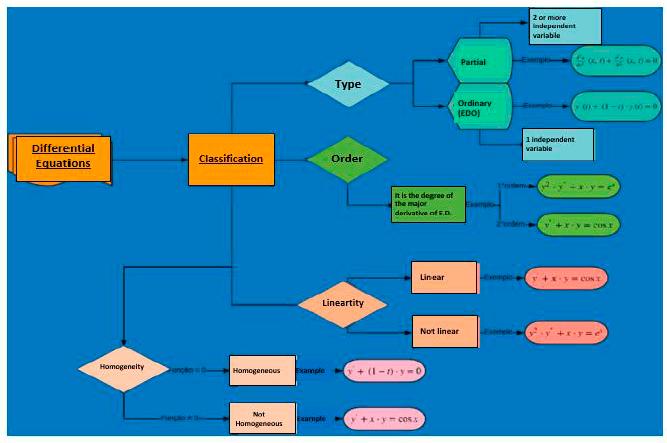
Source: Prepared by the student (volunteer) who used aprEnDO.
Figure 10 Concept Map- Classification of ODEs
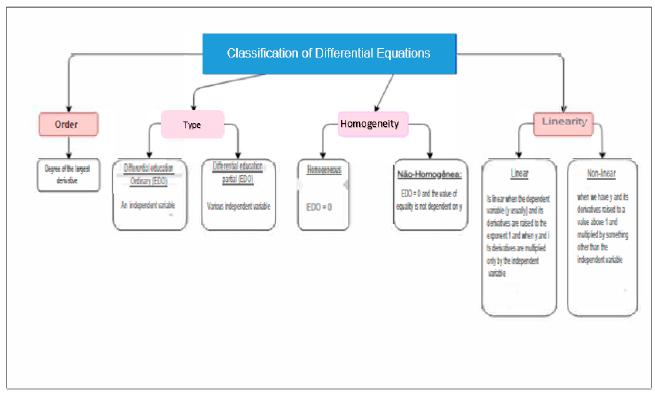
Source: Prepared by the student (volunteer) who used aprEnDO.
Figure 11 Concept Map-Classification of ODEs (another version).
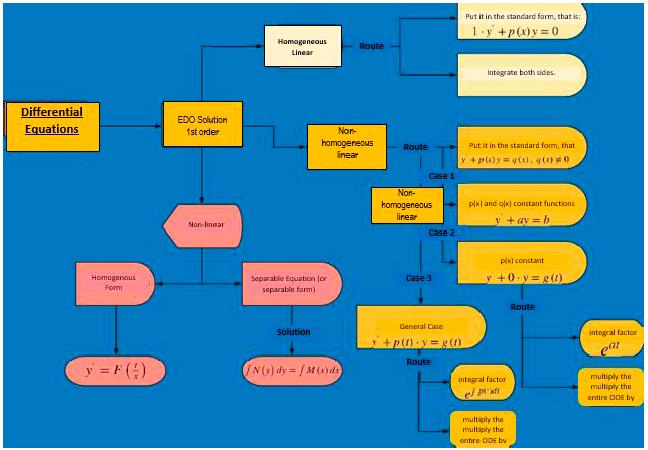
Source: Prepared by the student (volunteer) who used aprEnDO.
Figure 12 Concept map- Solutions of 1st order ODEs.

Source: Prepared by the student (volunteer) who used aprEnDO.
Figure 13 Concept Map - Solutions of 1st order ODEs (other version)
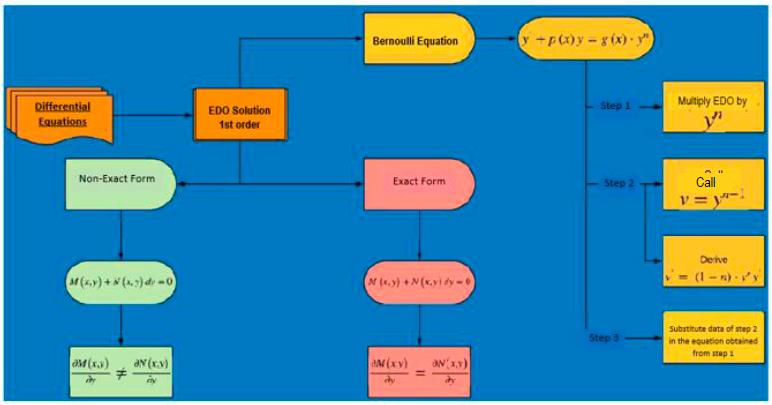
Source: Prepared by the student (volunteer) who used aprEnDO.
Figure 14 Concept Map - Solutions of 1st order non-linear ODEs
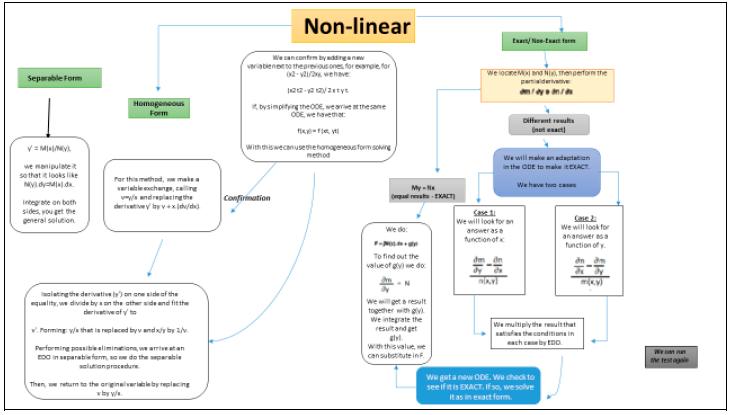
Source: Prepared by the student (volunteer) who used aprEnDO.
Figure 15 Concept Map- Solutions of 1st order nonlinear ODEs (other version)
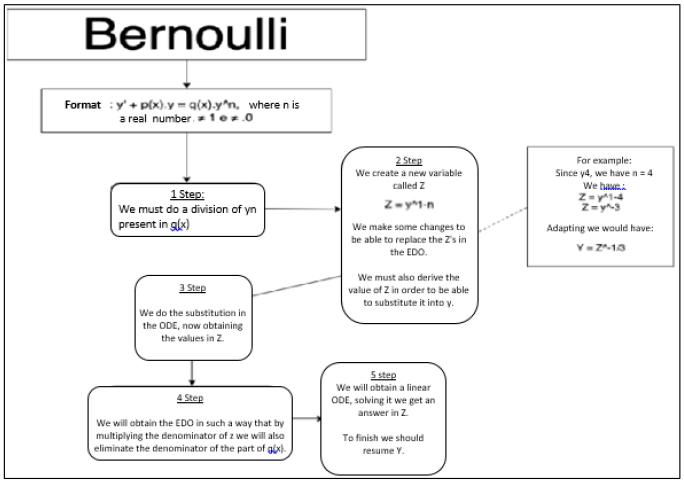
Source: Prepared by the student (volunteer) who used aprEnDO.
Figure 16 Bernoulli equations - Special kind of nonlinear ODEs
The work with concept maps allowed students to show how they organized the knowledge acquired in the classroom and with the help of the aprEnDO game, favoring various learnings, which, going beyond the sphere of the themes addressed as teaching content, also encompassed other aspects, such as: focus on the essential, favoring the key concepts; prioritize ideas, establishing meaningful relationships between them, sedimenting and integrating content; favoring the negotiation of meanings and forms of structuring.
Learning to identify, in the whole, the most relevant and essential information was the aspect indicated by all Figures 10 to 16, evidencing the recognition that, throughout the school process, these students were deprived of the possibility of learning to proceed with readings that would allow them to identify the main ideas and determine the key concepts. In the open response questionnaire, one of the participating students stated:
Often, the difficulties we face in higher education are just reflections of the difficulties we face in higher education are just reflections of the difficulties we have in reading and, in fact, understanding a text. The use of AprEnDO as an auxiliary tool in the concepts taught by the teacher were reflected in the construction with conceptual maps that led us to learn to identify the essential elements essential elements and interrelate them. This was an immense gain! (volunteer student)
Final Considerations
As for the arguments used to justify their use, digital games receive almost unanimous approval that they enhance students' skills by allowing them to explore their knowledge. In addition, games provide practical opportunities to enhance their knowledge under controlled conditions, to make choices, and to experience their consequences. Because of their characteristics, games allow adjustments to be made, such as simplifying content in order to make the topic to be covered easier and more manipulable. Other positive features highlighted are the motivation of students (an advantage repeatedly highlighted), and the possibility of inserting students in active tasks. The present study therefore reinforces the potential of digital games to support the teaching of scientific disciplines at the higher level, as they can facilitate from the understanding of complex topics, to the development of cognitive and behavioral skills important for personal and professional development.
The great challenge of education is to put into practice today what will serve for tomorrow, because, "no theory is final, just as no practice is definitive, and there is no unlinked theory and practice" (D'Ambrósio,1996, p. 80). With these final considerations, we hope that this experience report can serve as a suggestion for future works, of application and publication of reports on the use of cell phone applications in the classroom.
In view of the above, and due to the involvement of the students and the teacherauthor, it can be said that the approaches used here provoked and will provoke a significant change in the teaching and learning process, contributing to an innovative education, more human, that awakens the student's interest in participating in the class, transforming the classroom into a rich laboratory, provoking personal and cognitive growth, considering the student as an active being during the whole process.
For future applications, it is desired to return to the statistics collection module, since they are important facilitators of analysis. It is planned to insert different data to collect, and also to insert the module for collecting internal feedbacks to the application, since they can help to obtain more feedbacks from the students.
Referências
CERUTTI, Elisabete; NOGARO, Arnaldo. Desafios docentes no ensino superior: entre a intencionalidade pedagógica e a inserção da tecnologia. Revista Ibero-Americana de Estudos em Educação, v.12, n. 3 p. 1592-16099, jul/set, 2017. [ Links ]
D’AMBRÓSIO, Ubiratan. Educação matemática: da teoria à prática. Campinas: Papirus, 1996. [ Links ]
FALCÃO, Paula; VILA, Magda. Focalização de Jogos em T & D. Qualitymark. RJ, 2008. [ Links ]
FREIRE, Paulo, FAUNDEZ, Antônio. Por uma pedagogia da pergunta. 4. ed. Rio de Janeiro: Paz e Terra, 1998. [ Links ]
GERHARDT, Tatiana Engel; SILVEIRA, Denise Tolfo (Org.), Métodos de pesquisa. Coordenado pela Universidade Aberta do Brasil - UAB/UFRGS e pelo Curso de Graduação Tecnológica - Planejamento e Gestão para o Desenvolvimento Rural da SEAD/UFRGS. Porto Alegre: Editora da UFRGS, 2009. 120 p. ISBN 978-85-386-0071-8 [ Links ]
GIL, Antônio Carlos. Métodos e Técnicas de Pesquisa Social. 5 ed. São Paulo. Atlas. 1999. 206 p. ISBN 8522422702 [ Links ]
IBGE. Pesquisa Nacional por Amostra de Domicílios: Acesso à internet e à televisão e posse de telefone móvel celular para uso pessoal: 2017. 2018. Disponível em: https://biblioteca.ibge.gov.br/index.php/biblioteca-catalogo?view=detalhes&id=2101631, Acesso em 12 dez. 2019. [ Links ]
JOHNSTON, Brian, BOYLE, Liz, MACARTHUR, Ewan, & MANION, Baltasar Fernandez The role of technology and digital gaming in nurse education. Nursing Standard, 27, p. 35-38, 2013. [ Links ]
MARTINS, Cristina Martins; GIRAFFA, Lucia Maria Martins; LIMA, Valderez Marina do Rosário Lima3. Gamificação e seus potenciais como estratégia pedagógica no Ensino Superior. Novas Tecnologias na Educação, v. 16, n.1, p. 1-10, 2018. [ Links ]
MENEZES, Stefane; ROZA, Jiani da. Genius math: uma aplicação mobile para auxiliar a aprendizagem da matemática na pré-escola. In: BRAZILIAN SYMPOSIUM ON COMPUTERS IN EDUCATION (SIMPÓSIO BRASILEIRO DE INFORMÁTICA NA EDUCAÇÃO-SBIE), 27., Uberlândia, 2016. Anais, Uberlândia, 2016. p. 250 -259. [ Links ]
MORAES, Isadora Giacomini; COLPANI, Rogério. Desenvolvimento de um Serious Game com Realidade Aumentada para auxiliar no processo de ensino-aprendizagem de Matemática Básica, In: ANAIS DO XV SIMPÓSIO BRASILEIRO DE JOGOS E ENTRETENIMENTO DIGITAL - SBGAMES 2016. São Paulo, 2016, p. 242-245. SBC, Set. 2016a. [ Links ]
MORAES, Isabela Giacomini; COLPANI, Rogério. Desenvolvimento de um Serious Game, baseado na rerroupagem do clássico pac-man, para auxiliar no ensino de Matemática Básica. In: ANAIS DO XV SIMPÓSIO BRASILEIRO DE JOGOS E ENTRETENIMENTO DIGITAL - SBGAMES 2016. São Paulo, 2016, p. 758-761. SBC, Set. 2016b. [ Links ]
MORENO, Moreno Mar; AZCÁRATE GIMÉNEZ, Carmen. Concepciones y Creencias de los profesores universitarios de Matemáticas acerca de la enseñanza de las Ecuaciones Diferenciales. Revista Enseñanza de las Ciencias, Barcelona, v.21, n. 2, p. 265-280, 2003. [ Links ]
MOREIRA, Marco Antônio. Mapas Conceituais e Diagrama V. Porto Alegre: UFRGS. 2006. [ Links ]
SÁ, Eveline J.V; TEIXEIRA, Jeane S. F.; FERNANDES, Clovis Torres. Design de atividades de aprendizagem que usam Jogos como princípio para Cooperação. In: ANAIS DO XVIII SIMPÓSIO BRASILEIRO DE INFORMÁTICA NA EDUCAÇÃO (SBIE), São Paulo - SP, Brasil, 2007. [ Links ]
TAKITA, Bruna; SANTANA, Jackson; DE SOUZA, Pedro. Explosion Math: um jogo digital como recurso na aprendizagem de Matemática. Revista Brasileira De Ensino De Ciências E Matemática, v. 1, n. 1, p. 54-64, 2018. [ Links ]
WU, Wen-Hsiung, Chiou, Wen-Bin, Kao, Hao-Yun, Alex Huc, Chung-Hsing, Huang, Sih-Han. Re-exploring game-assisted learning research: The perspective of learning theoretical bases. Computers & Education, v. 59, n. 4, p. 1153-1161, 2012. [ Links ]
Received: March 07, 2020; Accepted: May 29, 2021; Published: June 17, 2021











 texto em
texto em 


